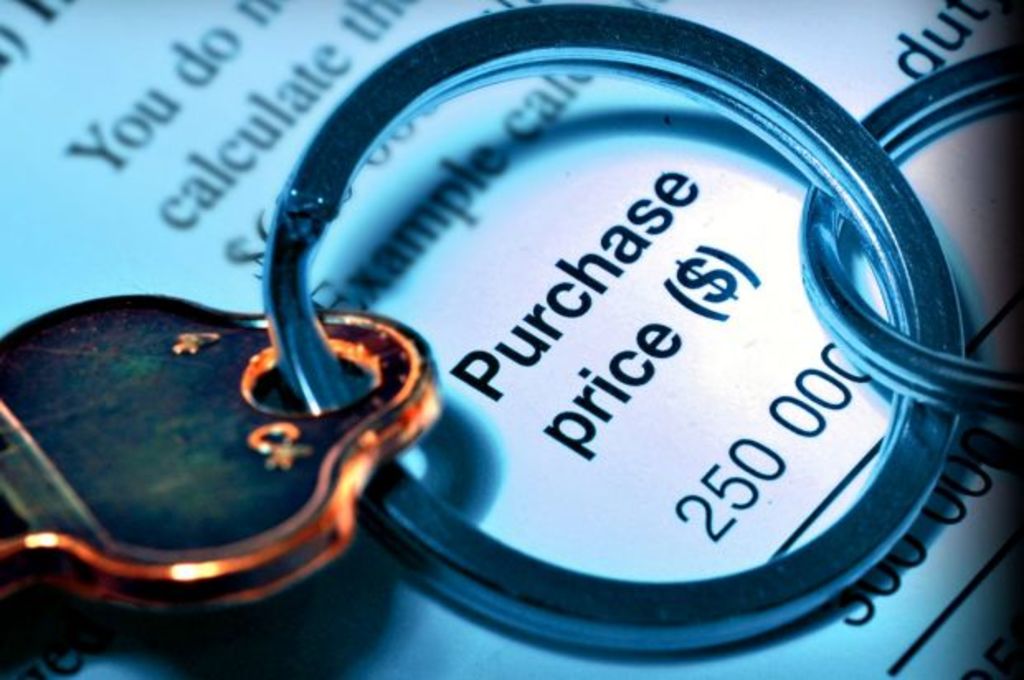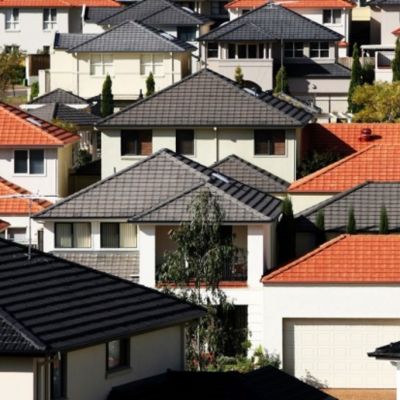
High stamp duty costs dissuading some buyers from purchasing a home
When you buy a property in Australia, with the exception of Canberra, you have to pay stamp duty – a government tax that increases with the cost of the home you’re buying.
Julie O’Donohue considered buying a three-bedroom home in Victoria’s Torquay as part of her future sea-change retirement plan.
But once she had factored in the stamp duty, she realised it would be unaffordable on her budget – adding an additional $30,000 to the purchase price.
“The stamp duty just pushed the financial implications too high,” said O’Donohue, founder of NextAddress.
She has pushed her retirement home ownership dreams back to reconsider in the future.
“We need people to be investing in property and their future … to have a disincentive is ridiculous,” she said.
How much are you paying?
Right now, stamp duty on a median-price house in Sydney is more than a deposit for a typical investment property in Brisbane. That statement alone should be enough to make any home buyer or policymaker take notice.
Related: stamp duty calculator
In 1995, with a median Sydney house price of $177,000, stamp duty levied was $4685. Today, on a median priced home of $1 million, you’d have to pay $40,490. Other states have seen a similar ramp up in prices and, as a result, stamp duty. Off-the-plan properties are exempt in some states and territories.
The cost of this tax has increased about 750 per cent in the decade to 2015, Property Council of Australia research shows. This was faster than inflation and even house price growth.
These dollars go straight into the state government coffers, to be spent on infrastructure and other projects. But there has been a concerted effort by economists and the property industry, pushing for a change to “inefficient” stamp duty because of how it affects buying decisions and makes homes less affordable.
The climbing bill you have to pay
As house prices rise, stamp duty rises too. And the extra funds now needed to buy a home once you’ve sold are changing the normal buying and selling patterns, Richardson & Wrench Mosman-Neutral Bay director Robert Simeon said.
“Without a shadow of a doubt it has [been] stopping people from buying and selling,” Mr Simeon said.
Many home owners in expensive areas have opted to extend and renovate rather than move, and others have decided to stay put for longer without spending at all. This has a snowball effect – when downsizers stay put, there are fewer homes for upgraders to move into.
In effect, more property owners are stuck in homes that are too big or too small and the natural cycle of entry-level buying, upgrading and downsizing is altered.
In the September quarter of 2015, 28,746 houses and apartments in Sydney were on the market for sale. By September 2016, this had fallen to 22,131, Domain Group data shows.
“We’ve got the highest prices ever and the lowest number of properties on the market. And the reason for it is government taxes and charges,” Mr Simeon said.
“Stamp duty is one of the worst taxes in NSW.”
Starr Partners chief executive Doug Driscoll said death, divorce and debt would still tend to drive the market, even when stamp duty increased. But the “lifestyle movers”, as opposed to those changing home through necessity, have been drying up.
Why hasn’t the government tackled stamp duty?
Given how widely the tax is slammed, it might come as a surprise that the government hasn’t changed stamp duty, Real Estate Institute of NSW chief executive Tim McKibbin said. But the reason for this is fairly simple – it’s a significant source of income for the government coffers.
The state government’s balance sheet is in the black, and stamp duty “made an enormous contribution to this”, he said. Residential stamp duty accounted for almost 10 per cent of the state government’s revenue in 2015-16.
Not only is stamp duty beneficial in terms of income, it’s also “politically unpalatable” to change, HSBC chief economist Paul Bloxham said.
Without stamp duty, the government would have to look for an alternative source of revenue – which means changing other taxes to get money from elsewhere.
How could stamp duty be changed?
Increasing the GST and giving more of the revenue from this change to the states to make up for removing stamp duty is high on Mr Bloxham’s suggested reforms list.
But this would require state and federal governments to come to an agreement, something he said would present “significant political challenges”.
The Property Council of Australia has also pushed for a switch away from stamp duty to GST instead in Queensland, as has accounting professional body CPA Australia.
Another alternative would be for the state governments to replace stamp duty with a broad-based land tax. The ACT is going through this transition.
“Stamp duty is a tax on turnover, which inhibits the ability of the market to adjust and find an equilibrium. Land tax taxes wealth,” he said.
But it’s a hard sell to the public that raising land taxes would be efficient, he said. This idea was floated in 2010, in the Henry Tax Review.
A broad-based land tax to replace stamp duty was also recommended to the government in a KPMG study commissioned by the NSW Business Chamber and the NSW Council of Social Service in 2016.
The research found this change would provide an economic boost of 10,000 jobs and $5 billion in gross state product.
NSW Treasurer Gladys Berejiklian then told the ABC that they “don’t believe the current proposal yet has the support of the community”.
Another option could be to alter stamp duty for particular types of home buyers.
Mr Driscoll supported abolishing stamp duty for someone’s first home purchase, but also pointed to the possibility of levying more stamp duty on those with property portfolios.
“Based on the numbers, there could be a case for applying more stamp duty to a person’s second or third investment property to level the playing field and double the advantage for first home buyers, but this isn’t something I necessarily advocate or agree with.”
But stamp duty isn’t without its supporters. LF Economics co-founder Philip Soos argued stamp duty actually helped to keep dwelling prices down by “equal to or greater than the value of the stamp duty itself”.
“Therefore, rather than an inefficient transactions tax it is often considered to be, it acts like … [an] anti-speculation tax, helping to reduce prices,” he said.
What can be done in the meantime?
With significant reform for stamp duty looking unlikely in the short-term, most experts agree the least the government can do is tackle “bracket creep”.
“The government should reassess stamp duty and look at aligning it with inflation rather than just simply shaving off a small per cent for the sake of it,” Mr Driscoll said.
In the 1980s, stamp duty was expected to capture “the really expensive houses of $350,000 and higher”, Mr McKibbin said.
Now the median in Sydney is $1 million, and relatively high in other cities, “$350,000 won’t buy you a one-bedroom unit. It shows you how out of date this is,” he said.
